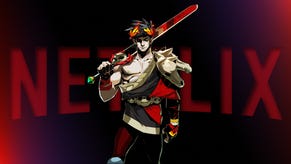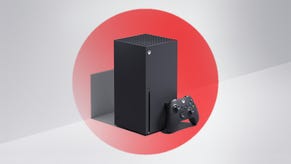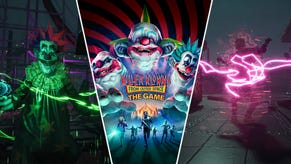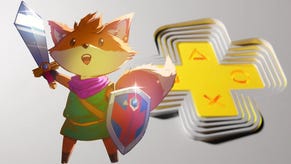Virtual Spotlight: StarTropics, the Zelda-like that Kinda Hates You
This short-lived Nintendo series never escaped the 8-bit era, but its two games—now available on Wii U—bring plenty of memorable moments (and lots of pain).
This article first appeared on USgamer, a partner publication of VG247. Some content, such as this article, has been migrated to VG247 for posterity after USgamer's closure - but it has not been edited or further vetted by the VG247 team.
Given the massive success of The Legend of Zelda series, it's strange to think Nintendo essentially closed the book on Link's 8-bit adventures as early as January 1987 with the side-scrolling sequel. Seeing as the NES had a good four years of life left in it, something had to fill the gap before Zelda fans got their first taste of Hyrule rendered with the unimaginable power of 16 entire bits.

That "something" would end up being StarTropics—well, for America, anyway. Call it conjecture on my part, but StarTropics' debut feels absolutely engineered to meet this specific need: Nintendo crafted it primarily for an American audience, and went for a design that blends the overhead dungeon-delving of the original Zelda with the side-scrolling platforming and combat of The Adventure of Link. And, strangely enough, just like Zelda II, StarTropics' 1994 sequel, Zoda's Revenge, also jumps to the absolute end of the alphabet by fiddling around with its title.
StarTropics exists as one of two games formally directed by Nintendo's Genyo Takeda, who will be celebrating his 45th year with the company in 2017. While Takeda would largely busy himself designing hardware with his team, the most fruitful years of the NES era saw him spearheading two games designed exclusively for America: Mike Tyson's Punch-Out!!, and StarTropics. Given that Takeda worked solely on Nintendo's arcade games up to that point, he seems like a somewhat odd choice to head up a tropical take on Zelda; but seeing as not a single StarTropics interview exists, we'll have to assume the company had its reasons.
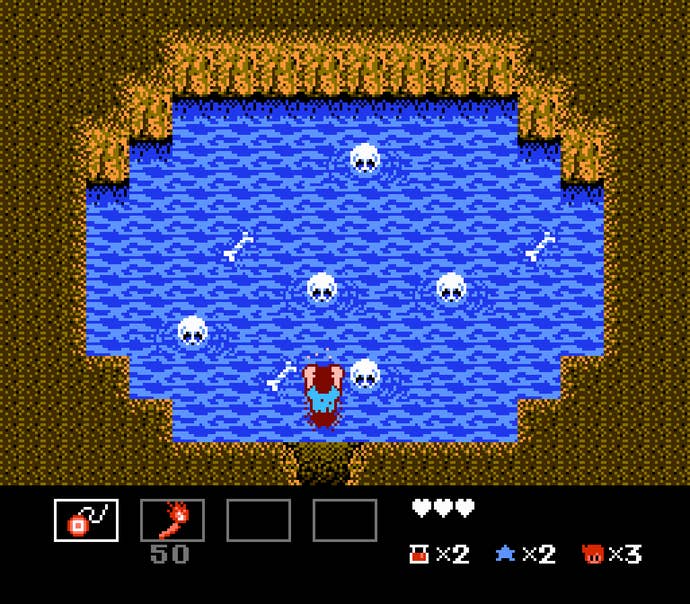
If StarTropics gets by on anything, it's charm. Nintendo definitely had a fixation on The Caribbean at this time—please see Super Mario Bros. 3's sick as hell reggae beats—and StarTropics feels like the logical conclusion of this obsession. Until it goes slightly off the rails in its final chapter with a New Age twist, every element of the game—from ghost pirates to parrot puzzles—communicates a pervasive tropical theme. (Coincidentally, LucasArts' The Secret of Monkey Island would also launch in 1990.) And there's a bit of The Goonies mixed in for good measure: The hero's name is Mikey, and he uses a "star" as his weapon—which is in no way similar to the yo-yo, a registered trademark of the Duncan company. (Wink.)
Unfortunately, this charm can only carry StarTropics so far. For being such a lighthearted, freewheeling tropical adventure, it can be downright cruel. Much of this can be chalked up to its awkward controls, even if Nintendo clearly developed them as way for players to understand their presence within a 2D approximation of 3D space. Mikey moves across normal turf as Link does in the first Legend of Zelda, but his movement across tiles locks him down so he can only jump one or two spaces in any cardinal direction from his current position. It's a smart solution in theory, but switching between these two types of control on the fly makes for a somewhat awkward experience, especially when you're immediately thrown into split-second, sink-or-swim decisions.
Above all, StarTropics has a penchant for drowning the living hell out of Mikey, who clearly should have taken some swimming lessons before his trip to C-Island. In StarTropics' dungeons, instant death is literally around every corner, and the game takes great glee in setting up some unfair situations: One of the first levels clearly signals Takeda's sadism by dumping you into a room filled with water if you choose the "wrong" door—without even providing the slightest warning. This punishing atmosphere paired with StarTropics' use of Zelda II's lives system often makes Mikey's adventure a soul-crushing affair, as one misstep could send you all the way back to the beginning of a dungeon. Obviously, the Virtual Console's save state feature comes highly recommended.

Overall, StarTropics stands as a good game that's one ROM hack away from being a great game. Again, this is more conjecture on my part, but StarTropics' extremely high level of difficulty could have been a completely intentional choice to combat the huge rental market that ran the risk of cutting into Nintendo's sales. Since the company couldn't curtail rentals by legal means, plenty of US releases were made much more difficult than their Japanese counterparts. And seeing as StarTropics was never meant to leave the US, it seems incredibly likely they'd want to design it from the ground up as an extremely demanding experience.
StarTropics also contains a charming bit of copy protection that comes off as a further anti-rental measure. At a certain point in the adventure, you're asked to dip a letter packaged with the game in water to reveal a secret code—without it, you can't make any progress. The code number "747" would remain the same in every single copy of the game, but, in the days before the Internet, this knowledge didn't have much of a chance to spread. This also meant buying a used copy of StarTropics could backfire on you if the original owner didn't include all of the packaging. And really, a waterlogged sheet of paper wasn't really built to last.
Of course, Startropics would grow much more playable with its sequel, Zoda's Revenge—also released on the Virtual Console yesterday—but this perfectly competent and unconscionably late NES release doesn't carry the same strong theme or sense of charm as the original. Even though it's much, much sillier than the original, the improved controls don't really make up for the incredibly bland environments Mikey finds himself travelling through. (Seriously, an NES game from 1994 should look a hell of a lot better.) But even if both games have their flaws, they both stand as interesting experiments that failed to launch beyond their 8-bit origins. Given that there's no Kid Icarus-style grassroots movement clamoring for a sequel, it's incredibly unlikely we'll see Nintendo ever revisit this IP. But maybe they could at least throw us oldsters a bone by giving us a single StarTropics trophy in the new Smash Bros.?
Screenshots courtesy of VG Museum


